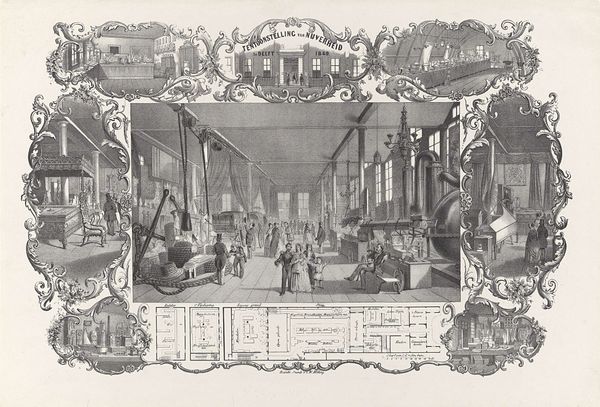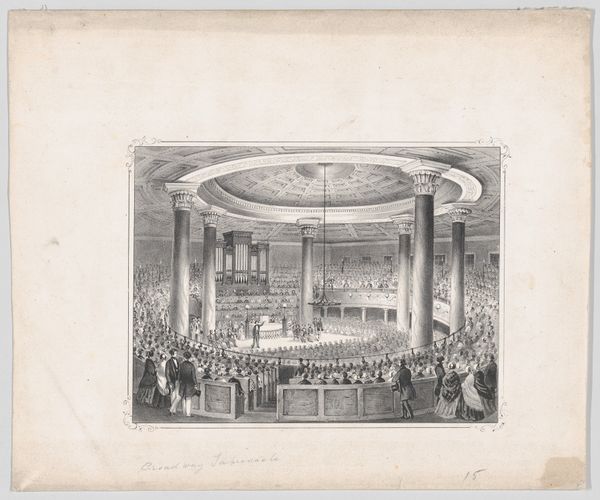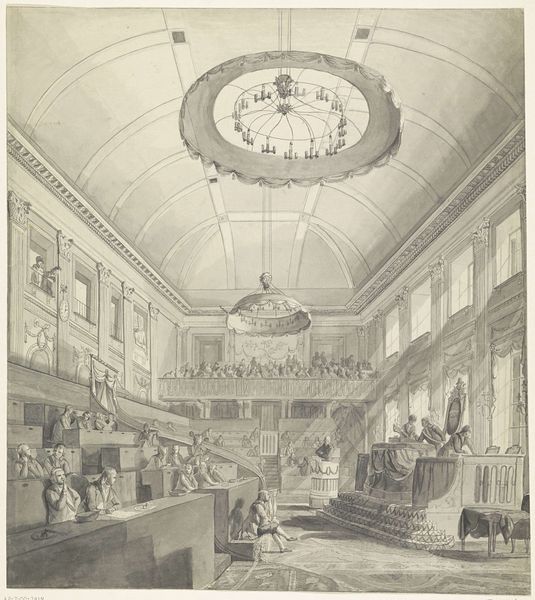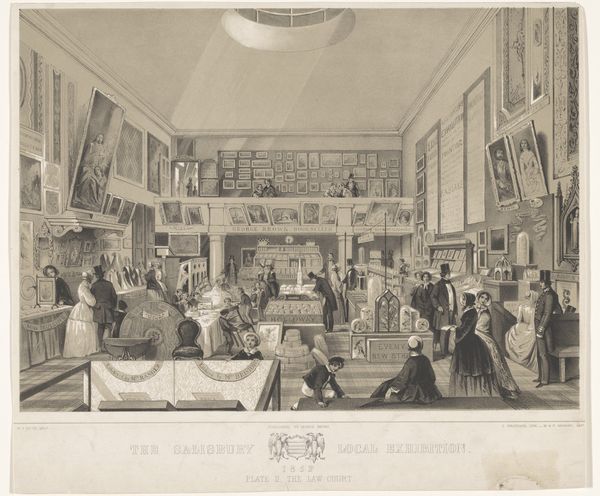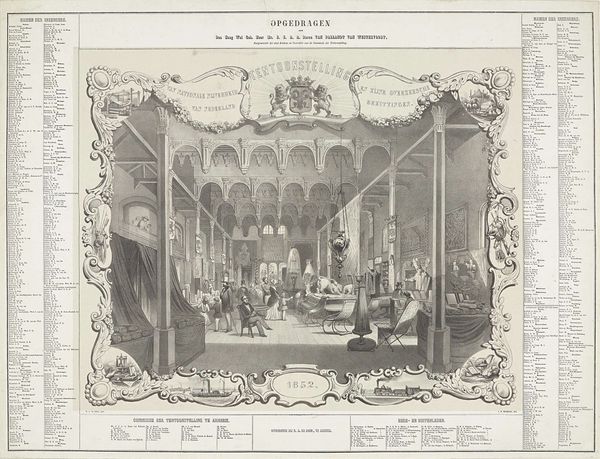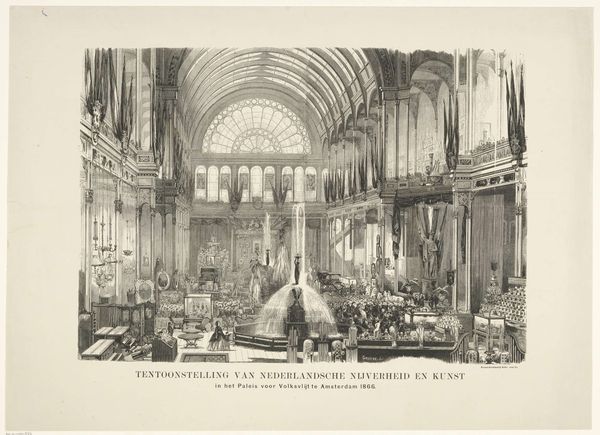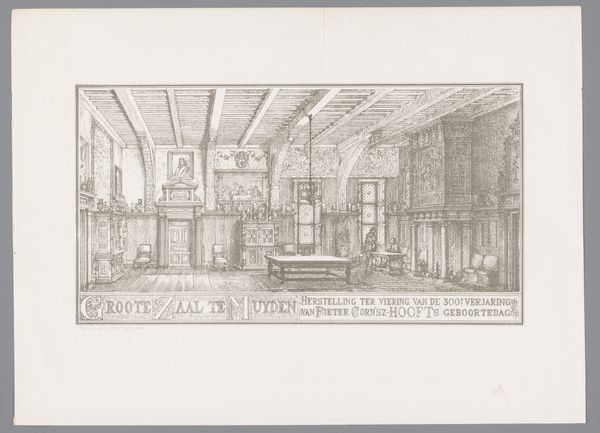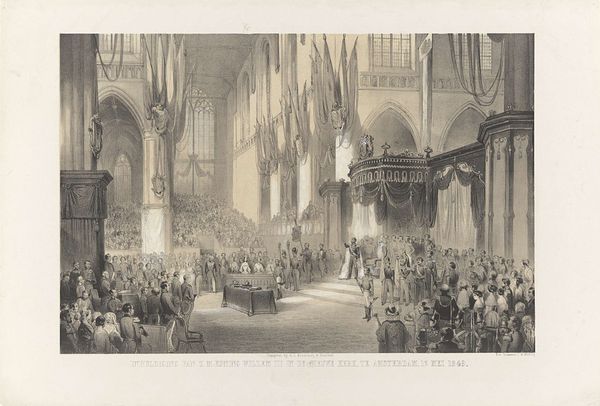
De groote parkzaal tijdens de tentoonstelling 1859 - 1861
0:00
0:00
drawing, print, engraving
#
drawing
# print
#
pencil sketch
#
old engraving style
#
landscape
#
19th century
#
engraving
Dimensions: height 158 mm, width 200 mm
Copyright: Rijks Museum: Open Domain
Editor: This engraving by Frederik Hendrik Weissenbruch, made sometime between 1859 and 1861, depicts the grand hall during an exhibition. It feels very documentary, like a snapshot of a cultural event. What can you tell me about the significance of depicting exhibitions in art? Curator: It’s interesting you call it a snapshot. Engravings like this served an important role in disseminating information and shaping public opinion about art and culture. Consider the context: increased literacy rates, the rise of the middle class, and a growing interest in art. How did these engravings democratize art? Editor: I guess by making art accessible to a wider audience through print, rather than exclusive access only by seeing it in person or if you are part of an elite circle? Curator: Precisely! Engravings such as this documented exhibitions, presenting them to those who couldn’t physically attend. Think about how these images would circulate – in newspapers, journals – becoming part of public discourse. Editor: So it's not just a picture, but an artifact that reflects the changing social landscape. It feels almost like an early form of social media. What do you find most interesting about this piece? Curator: I'm drawn to the interplay between art, the public, and the institutional spaces that showcased it. This engraving provides insight into the political dynamics of art display and the efforts to construct a national identity through art. Notice how people are presented and where the point of view places us in the scene. Who has access? What are they looking at? Editor: It's fascinating to consider this engraving as more than just a depiction of a room, but also about how art institutions presented themselves to the public and influenced society’s values. Thanks for highlighting the cultural context, it shifts the whole perspective. Curator: Indeed. Looking beyond the image itself towards its historical reception and the cultural forces at play gives it meaning.
Comments
No comments
Be the first to comment and join the conversation on the ultimate creative platform.
